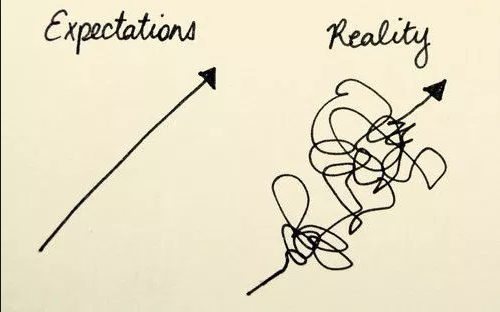When Is Enough, Enough?
This is the first in a series about career-life balance. Our careers often demand much of our attention, but for almost all of us it’s not the only thing in our lives. Yet, for many of us it can feel like we always have to be ‘on’ when it comes to work. In this first article we’re going to address one area that we can make a change towards finding a meaningful balance — email. Email was originally created to give us a more convenient form of communication, and it does just that. However, email today, especially when it comes to expectations, is very different than it was in those early years. Modern email is faster, and more convenient than ever before. It can also be a constant source of pressure and stress for many. The cloud, mobile devices and technological advances in software like, instant messaging and email, increase productivity and efficiency — they also raise expectations. Today, the expectation is that digital communications should be answered more quickly than ever — sometimes immediately! These expectations in our professional lives can often spill over into our personal lives. When you don't, the fear is that you can risk hurting relationships — personal and professional.  As the speed of technology increases, so does the rate at which people expect to receive a response to an email. The Viterbi School of Engineering at USC published a paper showing that most people respond to emails in two minutes. Currently, 50% of responses are sent within 120 minutes of an email being received. The research also found:
As the speed of technology increases, so does the rate at which people expect to receive a response to an email. The Viterbi School of Engineering at USC published a paper showing that most people respond to emails in two minutes. Currently, 50% of responses are sent within 120 minutes of an email being received. The research also found:
Managing Accelerating Expectations
 As the speed of technology increases, so does the rate at which people expect to receive a response to an email. The Viterbi School of Engineering at USC published a paper showing that most people respond to emails in two minutes. Currently, 50% of responses are sent within 120 minutes of an email being received. The research also found:
As the speed of technology increases, so does the rate at which people expect to receive a response to an email. The Viterbi School of Engineering at USC published a paper showing that most people respond to emails in two minutes. Currently, 50% of responses are sent within 120 minutes of an email being received. The research also found: - if a person planned on responding at all, they did so within a two-day window
- milennials had quicker response times
- users on smartphones responded more quickly than laptop users.
Finding a Balance
Typically, we’re all putting pressure on each other at the same time. There are only so many emails that an individual can answer within a certain time frame. Someone is bound to be disappointed as expectations rise. Setting boundaries and acceptable rules around email etiquette can help to manage reasonable expectations. Setting boundaries for yourself, and establishing rules within an organization can help, so that people don’t become overwhelmed with email communications. People respond positively when organizations, or co-workers clearly state policy in regards to email communications. One of the most effective boundaries that you can set is not answering emails outside business hours. There are exceptions where responses need to be timely, and timing is critical to the outcome. For example, a internet server has gone down and users can’t access the website. Communication between the people solving the problem will need immediate attention. However, the truth is that in most cases, a slightly longer response time doesn’t actually add or take away from the effectiveness of the communication.In Conclusion
Email is evolving, and the time we spend on it is increasing. Setting boundaries and developing practices that help to manage expectations is the first step you must take in order to avoid email overload.Main photo by Juliette Leufke on Unsplash



